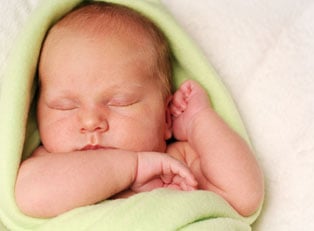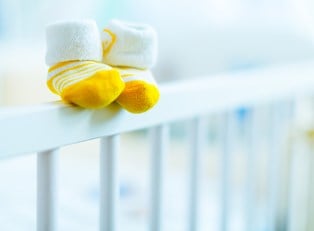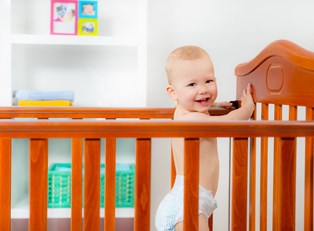A baby's crib should be the safest place in the house. Your child should be safe when left unattended in the crib, and you should feel secure living your little one there for the night, naps, and times you need a break. Some critical precautions go into making a baby's crib safe. Some parents opt for a bassinet in the early months, and as long as it meets safe sleeping place requirements, that’s okay too. Here’s a look at making your baby’s crib as safe as possible from injury, entrapment, and sudden infant death syndrome (SIDS).
New or Used
Your best bet is always going to be a new crib. This ensures Baby’s sleeping space follows the latest safety regulations, has all the necessary hardware, and does not have any loose and potentially dangerous pieces. If you get a second-hand crib, make sure it is sturdy enough to withstand your little one and hasn’t been recalled by the US Consumer Product Safety Commission.
Construction
Although cribs with drop sides were all the rage a few decades ago, experts strongly discourage the use of these products -- and many have been recalled. Drop sides make infant insertion and removal easier, but they are also prone to hardware failure and manufacturing defects, which can make it is easier for small hands and legs to get stuck. No new cribs with drop sides are currently certified for use in the U.S., although some have a drop gate (the very top of the side folds down instead).
Make sure the space between slats is no wider than 2-3/8 inches. If you can fit a soda can between the bars, it’s too wide. Once you have your crib set up, make sure all hardware is secure and not sticking out. Remember, screws and bolts can loosen over time, so check fixtures periodically. Contact the crib’s manufacturer if any pieces need to be replaced.
Design
Cutouts in the headboard or footboard may be cute, but tiny clothes and limbs can get stuck. Likewise, four-poster cribs should be avoided, as they make a path for children to climb or clamor out of the crib. Look for corners 1/16 of an inch or less.
Make sure any paint is in good condition as cracked or peeling paint can be a choking hazard. Additionally, if your crib is from the 1970s or earlier, be wary of lead paint. Wooden cribs should be in good condition, with no splinters or rough edges that can cause injury.
Interior
Avoid ribbons, lace, or any other long dangly strangulation hazards. Until Baby’s first birthday, only keep the absolute minimum in his crib -- no thick blankets, pillows, loveys, or other hazards no matter how cute he looks snuggled up to his teddy bear.
Mattress
When you set up your crib, make sure your mattress is the correct size. Mattresses should be firm and fit snugly. If you can fit more than two fingers between mattress and crib, Baby could get stuck. The mattress should also be supported evenly and fully all the way around. Double check every time you change the crib sheet.
Some cribs also allow the mattress to be lowered as the child grows. Make sure to drop the mattress supports as your little one becomes more mobile -- and when she can climb out, it’s time to look at toddler beds.



